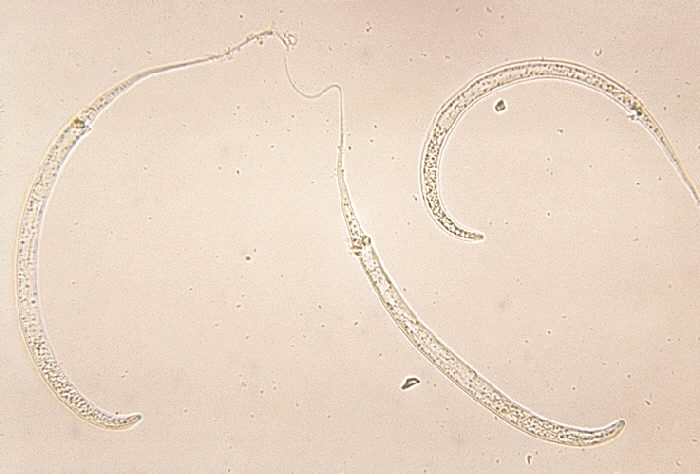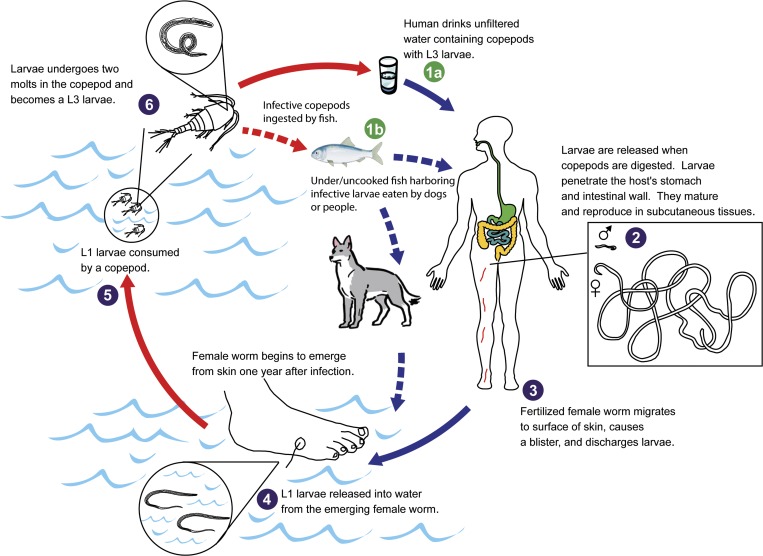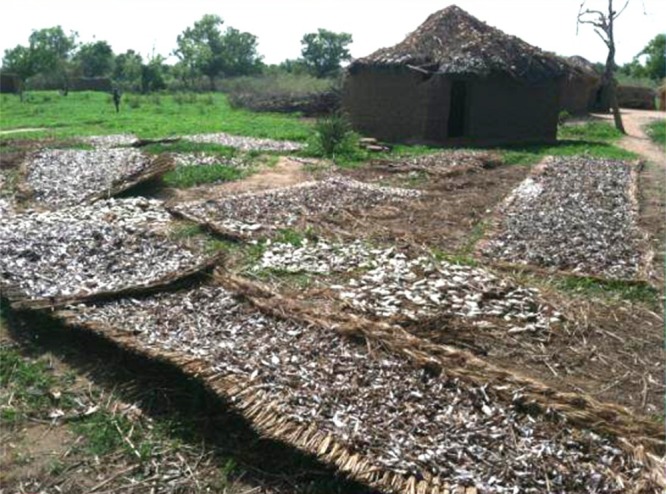Reproduction
Dracunculus medinensis is a parasitic nematode that is responsible for dracunculiasis, more commonly known as Guinea Worm Disease. The life cycle of this organism has been well documented which has assisted in reducing transmission rates. This has been accomplished by using wells, bore holes, and filters to increase access to cleaner water and containing infectious areas where cases are reported (Yusuf 2011).
The specific life cycle of this organism begins when L1 larvae are ingested by copepods where they become infectious after undergoing two molts within the copepod to become L3 larvae (Yusuf 2011). Because of limited access to clean water, humans often drink water from sources with infected copepods such as stagnant ponds and dugouts (Yelifari et al. 1997). Once within the human host, the copepods die and the larvae are released. The L3 larvae then penetrate the stomach, then the intestinal wall, and then enter the abdominal cavity. Once both the male and female worm mature, they mate resulting in the male’s death and the migration of the female to the subcutaneous tissues near the surface of the skin (Yusuf 2011). After roughly a year, the female causes a blister to form usually on the foot, but can occur on other areas of the body. Once the blister breaks open, it causes discomfort which leads to the human host dipping the blister in water. Once in the presence of water, the female surfaces and releases L1 larvae into the water where they can later be ingested by copepods and start the cycle over again (Yusuf 2011).
D. medinensis requires water and the intermediate host copepods in order to reproduce. Specifically, it needs the copepods to be ingested by human hosts so the female can grow within the tissues of the infected person. It is unclear whether or not temperature and rainfall affect transmission rate due to varying water sources that people drink from. A study in Chad in 2010 where drancunculiasis reemerged after a 10 year absence could not establish water sources that were common to cases of infection (Eberhard et al. 2014). This same study looked at reported cases of guinea worm in humans and in dogs. After DNA sequencing, it was concluded that the cases in dogs were also caused by D. medinensis (Eberhard et al. 2014). Because dogs and people usually drink water from similar sources and share some similar foods, a potential transmission cycle was proposed (Eberhard et al. 2014). While the usual transmission occurs when copepods infected with larvae are accidentally consumed by a human host, this transmission cycle proposes that infected copepods are ingested by fish. The fish, which are not cooked or undercooked, are then consumed by a human or a dog where the cycle continues and larvae mature and reproduce. Mass fish harvesting occurs in villages where large quantities of fish are gutted and are left to dry in the sun on the ground. This would allow dogs to have access to undercooked fish and entrails (Eberhard et al. 2014).
Previous Page: Form and Function
Next Page: Interactions




